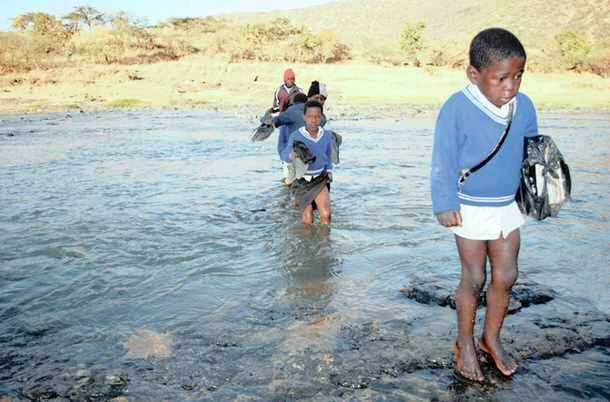All coins have two sides. Where at one end of the spectrum, according to UNESCO, around 57 million children do not attend school, on the other end, there are hundreds of children living in the most remote corners of the planet, who risk their lives in the most unimaginable fashion to go to school.
The school year start may be a delight (or dismay) to millions of kids around the globe. However, it’s important not to forget that, in some parts of the world, even an elementary school education can be a hard won luxury. There is a lack of quality infrastructure and unequal access to education, in the rural areas hence children take alternative risk routes to go to schools.
One of the main barriers to education worldwide is the distance from home to school. Some of the children have to take the most dangerous roads in the world to receive the education that some of us may take for granted. If school way might seem boring to kids in wealthier countries, these little ones are surely glad to have a chance at a better future. When rivers, forest, mountains and valleys stand between a child and the nearest school, is it any wonder parents choose to keep children at home? That’s why we work with communities to put children in a local school and keep them there.
Distance is just one of the barriers our children face, but it is one that we are easily able to address. Our schools are built in the very heart of the community we love it when our students can return home for lunch, or mothers can congregate outside at the end of the day.
For some children there is no easy stroll to a school bus stop or an airs conditioned ride in a parent’s car. Some walk along treacherous cliff edges. Others trek into the mountains for miles, in water, bushes or cross broken bridges to be at school on time. In some countries, You have to be good at hiking to make this journey to school. But since it’s a boarding school children only need to make the exhausting trip every so often.
In other parts, the only way to cross the river is by using a suspended hanging bridge connecting the other side of the river. The suspension bridge is worse for wear, risking the children’s possible danger of falling, drowning and crocodile attack
Wild Animals
Some Students often have to walk long distances to get to school through bushes and forest. During the trip, they often come face to face with wild animals like elephants, monkeys and lions. This is often due to the wildlife friendly environment and the number of game parks and reserves in the area. In some villages, students often come face to face with elephants and hyenas. While many people are amazed by the sight of elephants, they are actually considered one of the most dangerous animals due to their large size and feet that can trample their victims.
For children across the globe, a journey of up to three hours to the nearest school is just too much. We want to reduce the distance children have to travel for an education. However, the main remedy to reduce this globe problem is to build schools within short walking distance of communities, so that every child can make the journey.
Here are some of the dangerous routes students use to school
Flying over steel cables
Students canoeing to school
Traveling through the forest across a tree root bridge
Walking through plank on walls
Crossing broken bridge in the snow
Using inflated tire tubes
Miles journey through the mountains
Students Crossing river on a makeshift bamboo raft
Walking through tight ropes 30ft above river
Traveling on roofs of wooden boats
Crossing damaged suspended bridges
 Moni Malawi
Moni Malawi 
